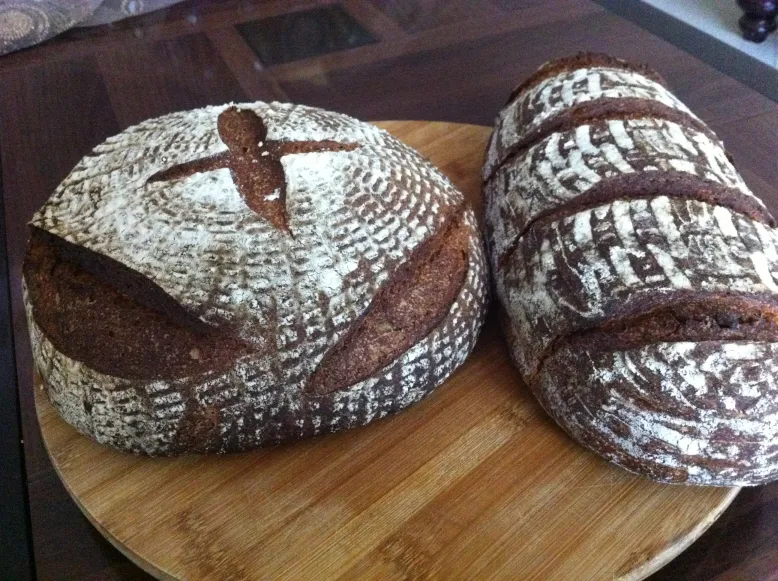Caraway Rye SD

180g 100% hydration SD
240g bread flour
140g dark rye flour
195g water
3/4 tsp sea salt
1 tsp freshly ground caraway
mix all ingredients except salt, autolyse 30 mins
add salt, knead 8 mins
bulk ferment with folds at 50 min and 100 min
shape and rise for 1 hour
retard in fridge for 2 hrs 30 mins
250 oven with steam for 15 mins, turn down to 220, mist at 20 mins, and bake for another 20 mins
came out crackly and singing! Look at those cracks!












 Hozzávalók:600 ml víz (ez lehet kicsivel kevesebb vagy több, függ a liszt milyenségétől!)1300 g BL55 liszt7 kávéskanál só (csapósan)1 evőkanál porcukor200 g természetes kovász + 12 órás kovász12 órás kovász receptje:300 ml víz300 g liszt2 evőkanál olaj ( kihagyható)20 g élesztőA
Hozzávalók:600 ml víz (ez lehet kicsivel kevesebb vagy több, függ a liszt milyenségétől!)1300 g BL55 liszt7 kávéskanál só (csapósan)1 evőkanál porcukor200 g természetes kovász + 12 órás kovász12 órás kovász receptje:300 ml víz300 g liszt2 evőkanál olaj ( kihagyható)20 g élesztőA


